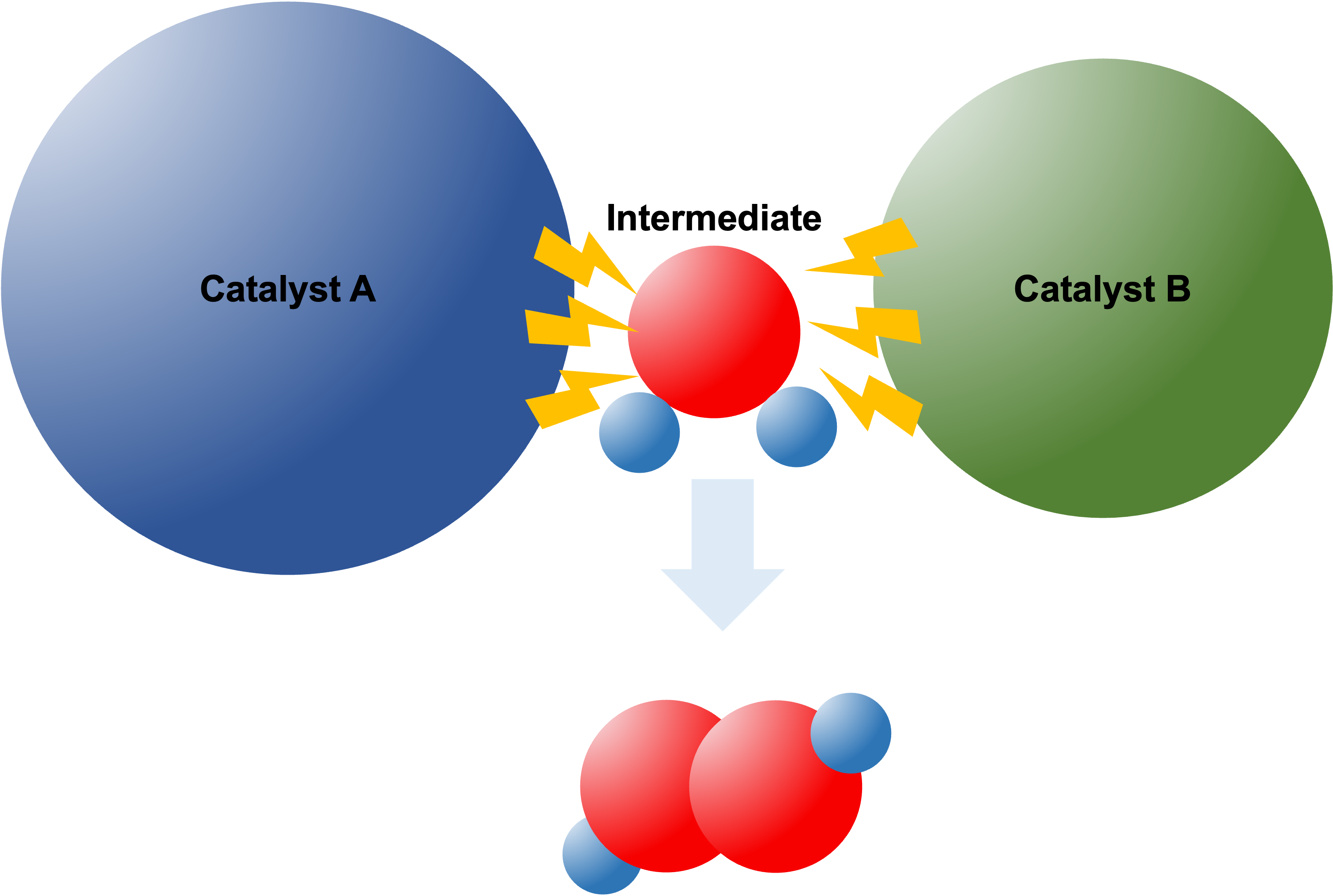Electrocatalyst

Generally, a catalyst is a substance that increases the speed of a chemical reaction without being consumed by the reaction. Thermodynamically, a catalyst lowers the activation energy required
for a chemical reaction to occur. ‘Electrocatalysts’ are materials that affects the activation energy of electrochemical reaction. Electrocatalyst is often used whenever the electrochemical
conversion reaction which can makes valuable chemicals or energy. Many researchers have studied electrocatalysts with high activity stability and selectivity that can be applied to galvanic
cells, fuel cell, and various types of electrolysis systems. Our group carry out ongoing study for “double activation” (chemical transform process where both catalyst work in concerto activate
reactants or intermediate) was often responsible for the synergistic effects of dual catalyst system. In the double activation of reactants and/or intermediates, multiple catalysts work for
activating a single species in concert. That is to say, the single species forms a separate chemical bond to each catalyst: e.g., [catalyst A] – intermediate – [catalyst B; double activator]
where the horizontal lines indicate chemical bonds. The double activation should be emphasized that both the primary inorganic catalyst and the secondary organic promoter (double activator)
kept interactions with the reaction intermediates.
Reference paper :
Nano Energy 2021, 86, 106048
